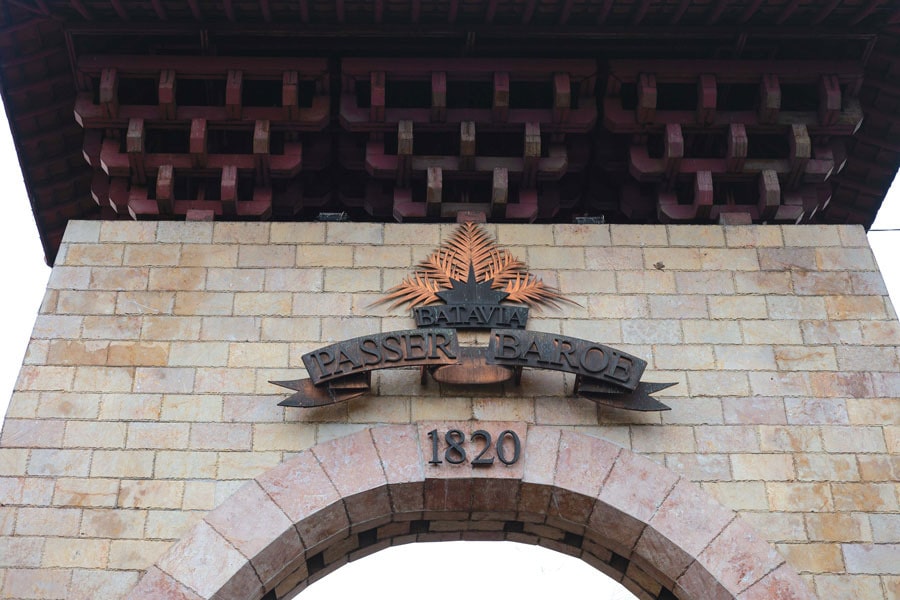
Specifically built by the Dutch Colonial government to accommodate the shopping cravings of European and Dutch elites in Batavia, Pasar Baru — or Passer Baroe, as it was called then — became a melting pot of communities and ethnicities, from Chinese, Indians, Europeans, and even Malays. Considered the city’s oldest shopping arcade, Pasar Baru continues to hold an age-old charm, where historic façades of long-established stores grace the street fronts.
Though slightly ironic today, Pasar Baru translates to ‘new market’ and was built in 1820. Its development followed a big migration of the central government by then Governor General Herman Daendels (1801-1811), seeing the power centres move from Oud Batavia (Old Batavia or Kota Tua) to Weltevreden, or today’s Lapangan Banteng and Gambir.
Now, there are two older markets in Jakarta, that being Pasar Senen, which opened in 1733 in Weltevreden, and Pasar Tanah Abang which opened in 1735. Both were Dutch-built markets too, made by architect Yustinus Vinck, but they were made to fulfil the needs of the lower class communities.

Previously, the RijswijkStraat (today’s Jalan Veteran) area was a rice field (where rijswijk means rice) was later developed into an elite area part of Weltevreden. In addition to Jalan Veteran, the development of the area also occurred at Noordwijk Straat (today’s Jalan Juanda), to Jalan Majapahit and Harmoni where many French-run grocery stores were established. These shops fulfilled the shopping needs of the rich Europeans who avoided Pasar Senen, whilst Pasar Tanah Abang was too far.
At that time, the numbers of Europeans and Dutch citizens were increasingly coming to Batavia and had settled around these areas. After Daendels’ time, Pasar Baru was opened where the Dutch and Europeans could comfortably stroll around the boulevard and freely in-and-out of the stores. Thus, the market adopted the name Pasar Baru.
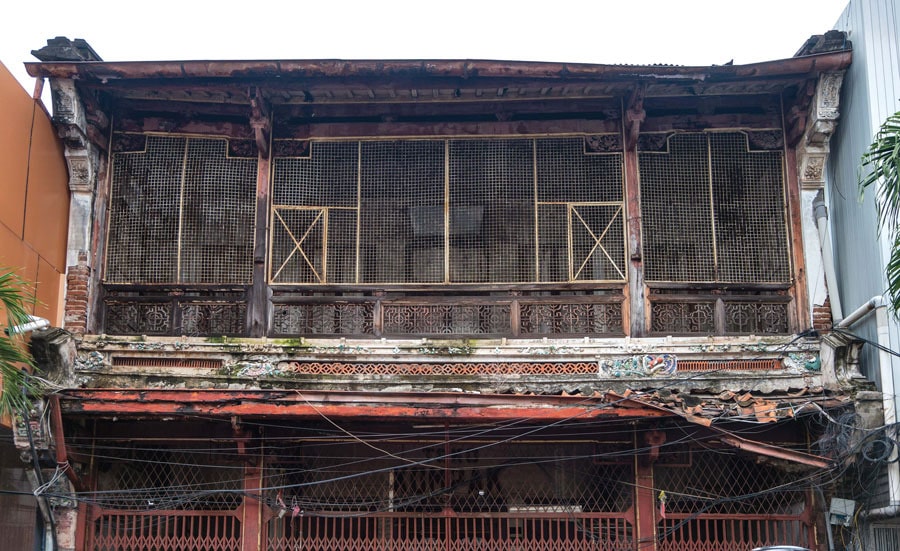
By the 1920s, the main stretch of Pasar Baru was dominated by Chinese and European styled stores, and the street fronts were lined with motorcars. The sado, the two-wheeled horse-drawn carriages slowly began to disappear. However, the most significant change was the arrival of Indian traders: Punjab, Sindh and Tamilnadhu Indians came to Batavia from Medan and began trading at Pasar Baru. They sold mostly textiles and sporting goods, and they continue to dominate the boulevard to this very day. Hariom’s Tailor and Lakhmi Mahtani are two businesses that have been running since around the 30’s.
As such, Pasar Baru became known as Jakarta’s little India, certainly an atmosphere that is palpable when strolling through the central market street. This was made official on 10 October 2022 when a ‘Little India’ entrance gate was built across Juanda train station.
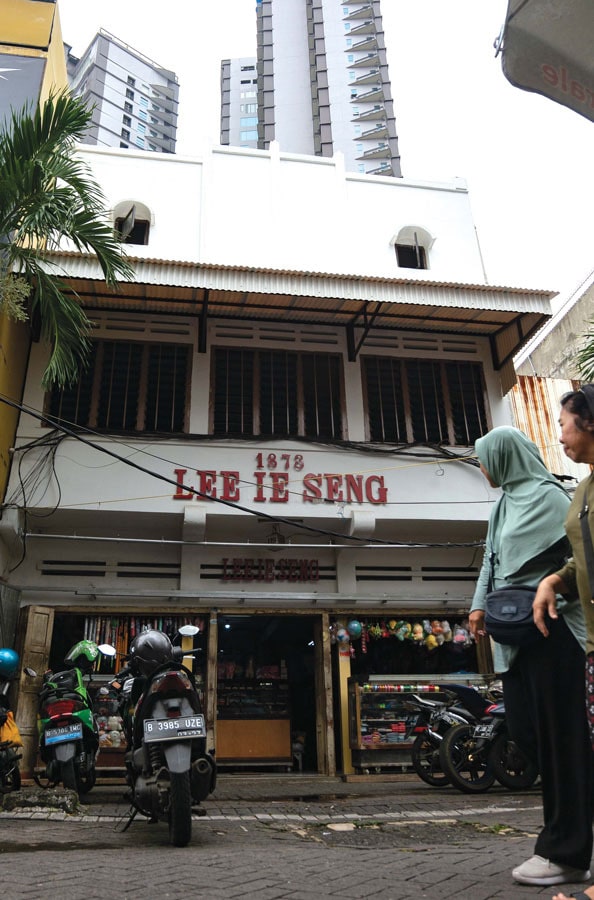


Though adopting the identity of its newer inhabitants, the Pasar Baru area showcases an eclectic variety of buildings. Sadly, many stores are empty and unkempt but one will still find a few historic gems. For example, the first department store of the Dutch East Indies, called Toko Tio Tek Hong, established in 1902, found on Jalan Pintu Air Raya, now converted into a food court.
From this shop, you can follow the road to the Ciliwung Pasar Baru Canal, which was built in 1821. Here on the canal one will find the Antara Photojournalism Museum and Gallery (Jalan Antara No.59), operated by the national news agency (LKBN), Antara. Founded in 1937 by four journalists – Adam Malik, A.M. Sipahoetar, Soemanang, and Pandoe Kartawigoena – Antara has played a major role in reviving the life of Indonesian press, especially for photojournalists. The gallery was established in 1992 and hosts regular photographic exhibitions open to the public.
Not far from the gallery, one will find Pasar Baru›s famous main gate, itself showcasing an interesting architectural style, with a Chinese roof structure. This marks the beginning of the arcade, lined with textile shops, sports shops and little eateries — a street upon which the noni-noni Belanda (Dutch ladies) used to stroll a century ago!
On the arcade are some great landmarks, such as Lee Ie Seng, a grocery store built in 1873 and still operating today. Another is Toko Kompak, the old residence of Tio Tek Ho, Majoor der Chinezen (1896-1908), the leader of the Batavia Chinese community. Though shuttered and abandoned today, it was believed to have been built in the first half of the 19th century, with Chinese, European and Nusantara architectural styles. At the end of the colonial era, it was sold and converted into a commercial shop, under the name Sin Siong Bouw. After independence in 1945, the name of the shop was changed to Kompak.
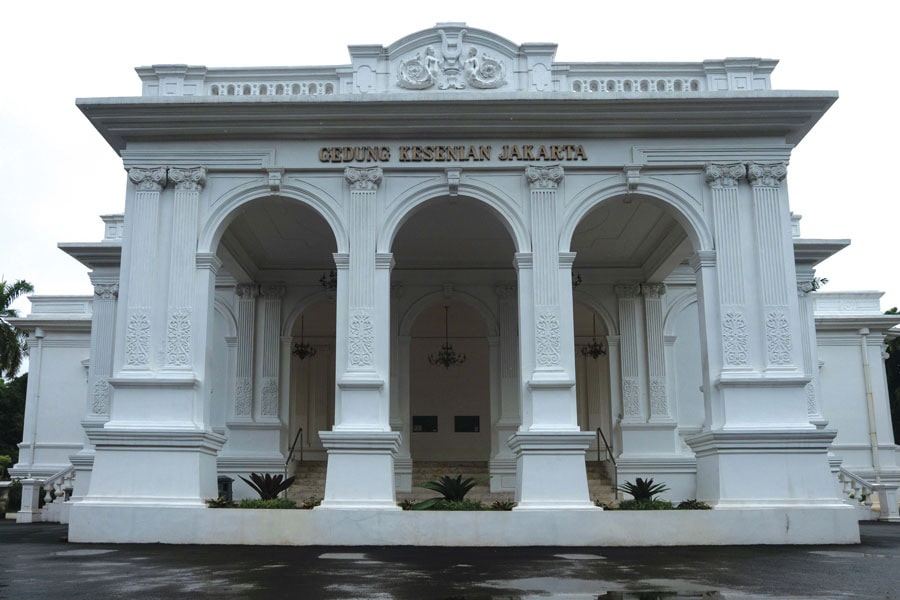
Both Tio Tek Hong and Toko Kompak were designated as two of the four cultural heritage buildings in Jakarta by Governor Anies Baswedan in March 2022. Another designated as a cultural heritage building is Sin Tek Bio or Dharma Jaya monastery tucked away in Gang Kelinci, Pasar Baru. The monastery, which was established in 1698, still exists despite being increasingly ‹cornered› in the trading area. The other building is found in Senen, The Eijkman Institute of Molecular Biology, built in 1911-1914 in the Nieuwe Kunst architectural style, which played an important role in the scientific research of tropical diseases. Apart from Sin Tek Bio, if you take the left side from the north gate entrance, you will find places of worship of the Indian community, one of which is the Sikh Temple
Pasar Baru also illustrates the spatial scheme of most old towns of Java: based on its philosophy, such as having an alun-alun (the square), with a palace in the south, places of worship in west, and markets to the east. Pasar Baru is a picture of a community coming together, where there is economic circulation and a building of worship as a reflection of the spirituality of the community.
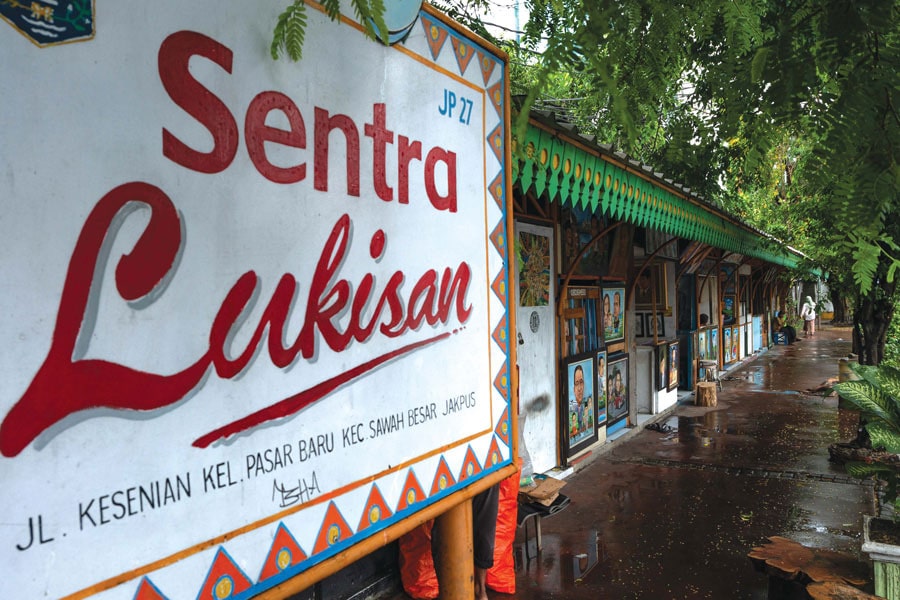
Until the 1970s, Pasar Baru was a destination for almost all residents of Jakarta to buy textiles, shoes, sports equipment, and other secondary needs. However, with the policy of the Government Ali Sadikin to build shopping malls in the five municipalities of the capital city, gradually Pasar Baru no longer became the major destination for middle and upper society. But Pasar Baru hasn›t lost its charm, especially for those who want to absorb a historic atmosphere. Two legendary eateries are worth a stop, including Bakmi Gang Kelinci as well a decades-old ice cream shop known as Tropic Ice Cream.
Pasar Baru is also surrounded by historical buildings and other tourist attractions. Opposite the main gate, you will find Pos Bloc, which has been open to the public since early September 2021. This creative hub for Jakartans occupies the Jakarta Philatelic Building or the former Pasar Baru Post Office Building, the first post office established by the VOC in Batavia on 26 August 1746. Today, it has been refurbished, still with the same beautiful façade but now filled with a variety of small-medium enterprises, including restaurants, cafés, eclectic shops and more. Nearby is another colonial remnant, Gedung Kesenian Jakarta (Jakarta Arts Building) which was originally built back in December 1821 under the name Schouwburg Weltevreden or Comidiegebouw. The Romanesque-style building stands majestically today and is one of the centres for hosting private cultural and performing arts events.

But art exists on the streets of Pasar Baru as well. Opposite Gedung Kesenian Jakarta one will find ‘Sentra Lukisan’, where street artists line the sidewalk showcasing their vibrant creations on canvas. Their art varies from funny caricatures of celebrities, public figures, and politicians as well as commissioned portrait paintings and landscapes. You can order customised paintings here for yourself or as gifts.
About 500 metres from the area, about a seven-minute walk away, is the Istiqlal Mosque, which can accommodate more than 200,000 worshippers. Apart from being a place of worship for Muslims, the mosque is also often used for offices of various Islamic organisations in Indonesia and social activities, including tourist attractions. Opposite Istiqlal, take a three-minute walk to the Jakarta Cathedral Church. This beautiful Catholic church has been built since 1810. Built in a neo-gothic style, you can worship and see the statue of Christ the King and the Cave of Mary at the Cathedral. Pasar Baru is filled with soul, both new and old, and despite its somewhat unkempt appearance, it makes for an intriguing stroll around for any urban explorer.







